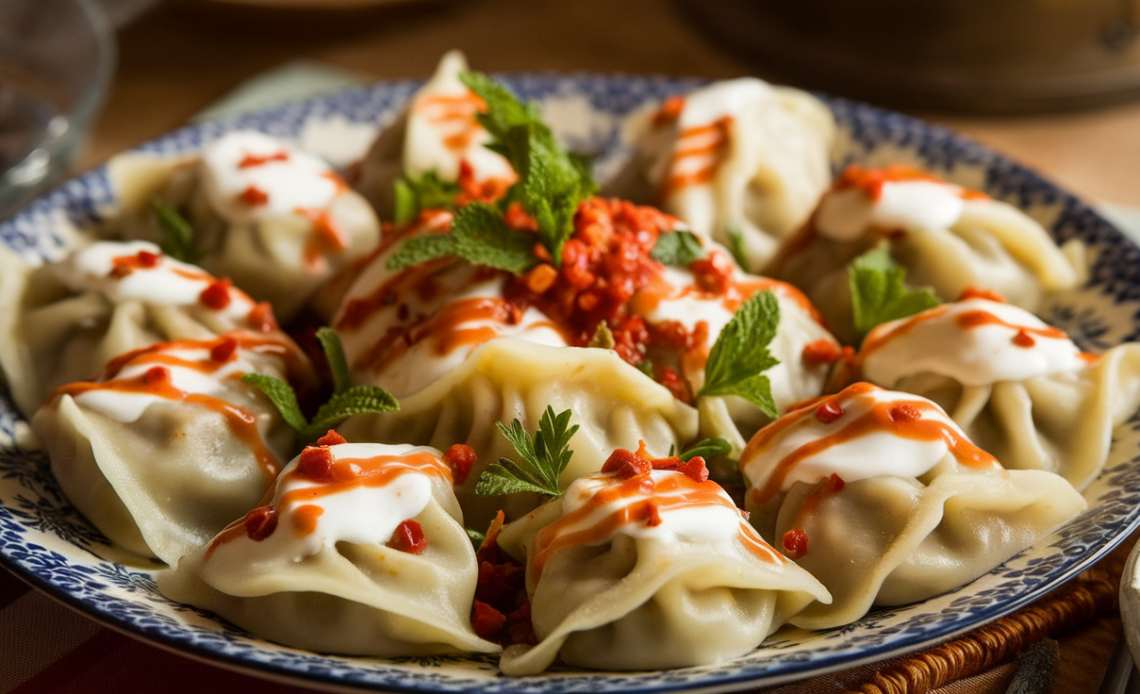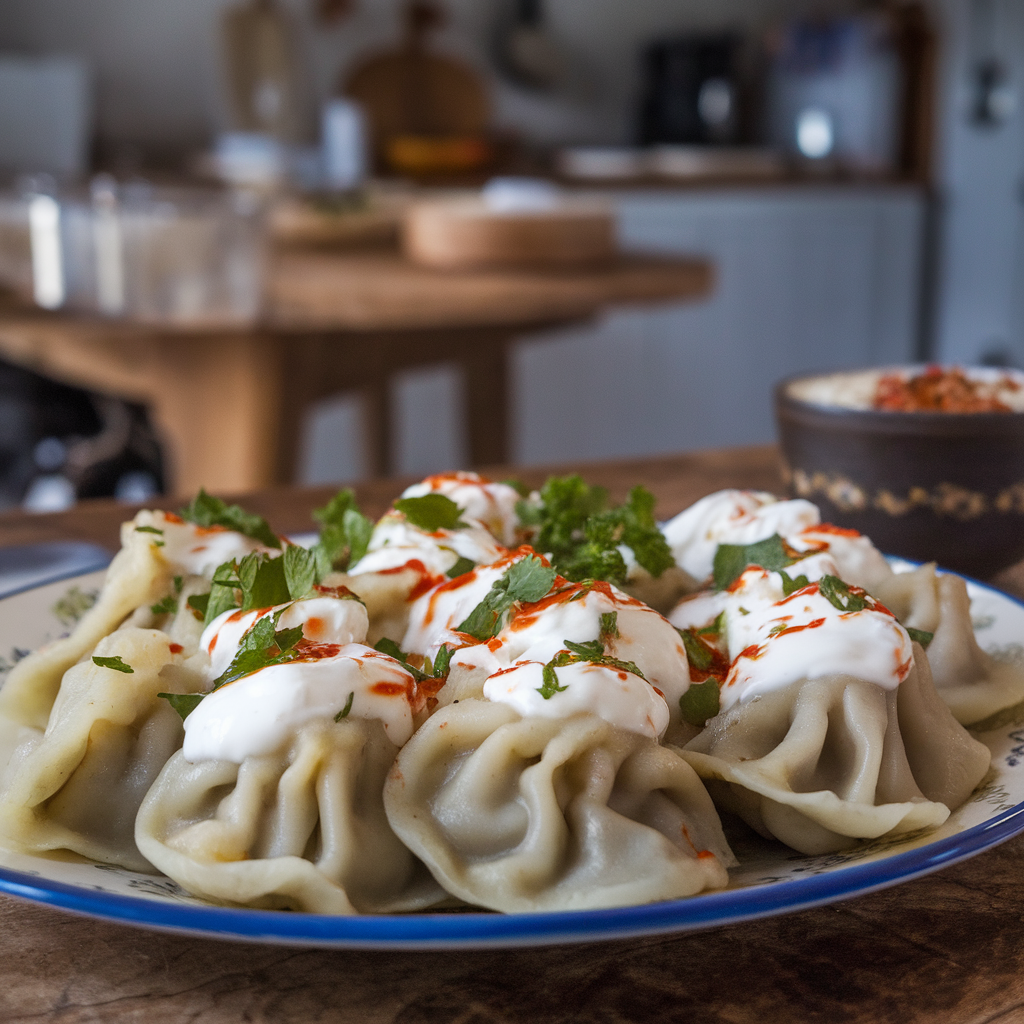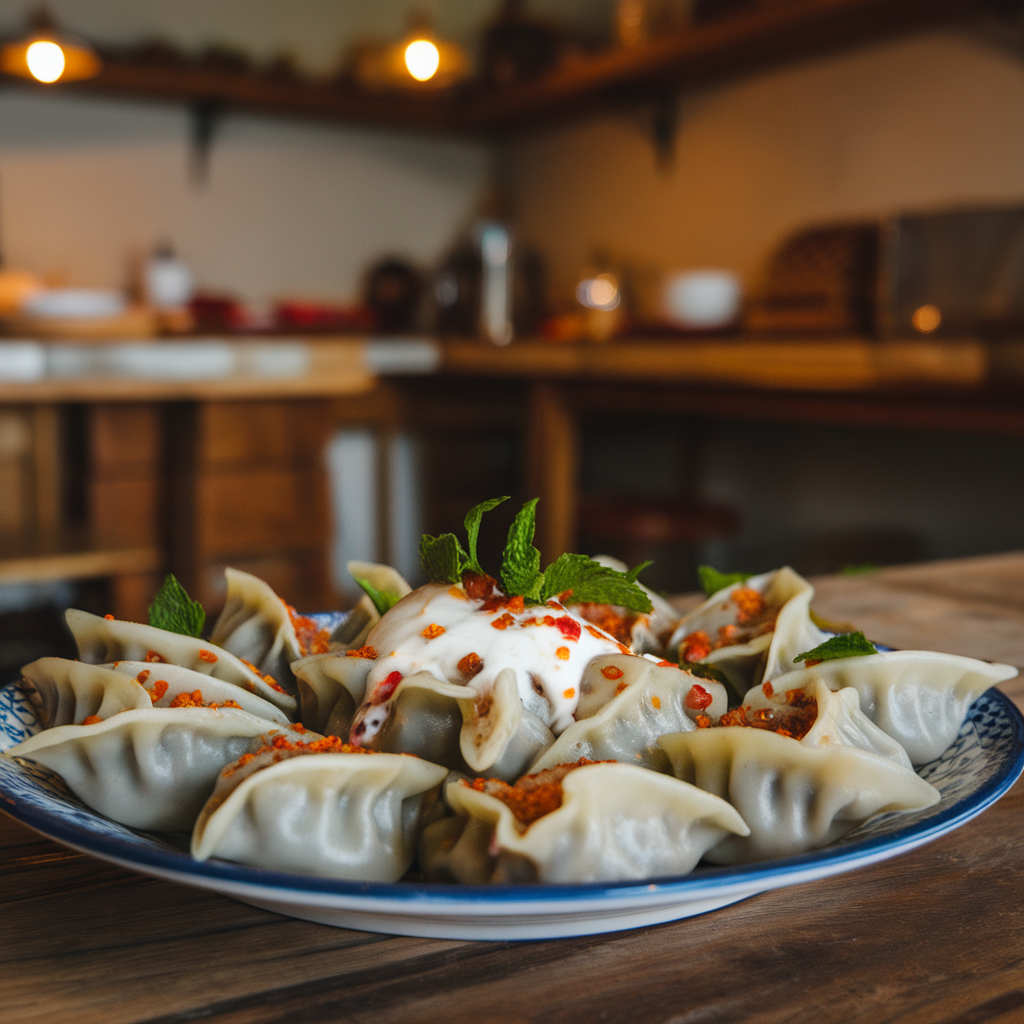
If you’re passionate about international cuisine recipes and love exploring flavorful and traditional dishes, Manti, the iconic Turkish dumplings, is a culinary treasure you simply cannot miss. Revered as a quintessential Turkish dish, Manti perfectly captures the heart of Turkish gastronomy — rich in history, culture, and exquisite taste.
Whether you’re browsing for creative Turkish dinner ideas or searching for comforting yet impressive dishes, this easy Turkish recipe delivers a sensational experience that combines the delicate craft of handmade dumplings with bold, vibrant flavors. This article dives deep into the world of Turkish dumplings, guiding you through the origins, ingredients, detailed preparation, and cultural significance of Manti, along with useful tips for perfecting this dish in your own kitchen.
What Are Manti? The Art and Tradition Behind Turkish Dumplings
At its core, Manti consists of tiny parcels of dough filled with a savory mixture of minced meat and spices. These bite-sized dumplings are then boiled and served with a cooling garlic yogurt sauce, topped with melted butter infused with fragrant spices like paprika or Aleppo pepper. The contrast between the tender dough, juicy filling, tangy yogurt, and rich spiced butter makes Manti a standout Turkish main dish.
But Manti is more than just food. It’s a symbol of tradition, hospitality, and family in Turkey and neighboring regions. Often prepared for special occasions, gatherings, and holidays, making Manti is a communal activity that brings loved ones together, each person taking part in rolling, filling, and folding the delicate dumplings.
Historical Roots of Manti: A Culinary Journey Across Borders
The story of Manti is a fascinating glimpse into the cultural exchanges of Eurasia. Its origins are often linked to Turkic nomadic tribes of Central Asia, where steamed or boiled meat-filled dumplings were staples due to their portability and nutritional value. As the Turks migrated and established the Ottoman Empire, these culinary practices evolved, adapting to local tastes and ingredients.
Today, Manti is embraced across Turkey with regional variations and has cousins in many cultures: from Uzbek manti and Chinese baozi to Armenian manti and Russian pelmeni. Each variation reflects local traditions, but the Turkish version remains uniquely beloved for its tiny, delicate dumplings and rich accompaniments.
Why Manti Should Be on Your Turkish Dinner Table
Looking for authentic Turkish dinner ideas? Manti is an excellent choice because:
- It’s deeply traditional: Rooted in centuries of culinary heritage.
- Balanced flavors: Juicy spiced meat, creamy garlic yogurt, and spiced butter meld beautifully.
- Visual elegance: The miniature dumplings look charming and inviting.
- Adaptable: Serve as a light appetizer or hearty main course.
- Great for gatherings: The making process is social and rewarding.
- A true comfort food: Warm, filling, and satisfying — perfect year-round.

Ingredients Explained: What Makes Manti So Special?
The Dough
The dough is the foundation of Manti. A simple combination of flour, egg, water, and salt forms a pliable, elastic dough that can be rolled paper-thin yet hold the filling firmly. Unlike some dumplings which use leavened dough or wrappers from purchased sheets, Turkish Manti dough is homemade, emphasizing freshness and texture.
The Filling
Traditionally, the filling is made from ground lamb or beef combined with finely grated onions, salt, black pepper, and sometimes cumin or sumac. The onion adds moisture and subtle sweetness, while the spices give warmth without overpowering the meat’s natural flavors. Some modern variations add parsley or other herbs, but classic Manti focuses on simplicity.
The Yogurt Sauce
Yogurt plays a starring role in many Turkish dishes, and here it acts as a cooling, creamy counterpoint to the spiced meat. Authentic Turkish yogurt is thick, creamy, and tangy, often made from sheep or cow’s milk. Mixing it with garlic creates a zesty, fragrant sauce that complements the dumplings perfectly.
The Butter Sauce
Melted butter flavored with paprika or chili flakes is poured over the dish just before serving, adding richness and a smoky, slightly spicy note. Sometimes dried mint or sumac is sprinkled on top to brighten flavors further.
Step-by-Step Turkish Manti Recipe: Mastering the Dumplings
Step 1: Making the Dough
- Combine flour and salt in a large bowl. Create a well in the center and crack in the egg.
- Slowly add warm water, mixing with your hands or a spoon until a shaggy dough forms.
- Knead on a floured surface for about 10 minutes until smooth and elastic.
- Wrap in plastic or cover with a damp cloth and rest 30-60 minutes.
Pro tip: Kneading well develops gluten for elasticity, which helps the dough roll out thinly without tearing.
Step 2: Preparing the Filling
- Mix ground meat with grated onion, black pepper, salt, and cumin (if using).
- Knead lightly until combined.
- Let rest in the fridge if possible to meld flavors.
Step 3: Rolling Out the Dough
- Divide the dough in two.
- Roll one piece on a floured surface as thin as possible (1-2 mm).
- Cut into small squares (~3 cm).
Step 4: Filling and Folding
- Place a tiny pinch (~¼ tsp) of filling in each square center.
- Fold corners diagonally, pinching tightly to seal.
- Traditional shapes vary: triangular or boat-like folds are common.
Tip: Use cold water to seal dough edges better.
Step 5: Cooking the Dumplings
- Bring salted water to boil.
- Add dumplings gently in batches.
- Boil 6-8 minutes until they float and dough is tender.
- Drain carefully.
Step 6: Preparing the Yogurt Sauce
- Mix yogurt with minced garlic and salt.
- Adjust garlic intensity to taste.
Step 7: Making the Butter Sauce
- Melt butter in a pan.
- Add paprika and chili flakes; stir quickly.
- Remove from heat.
Step 8: Serving
- Plate dumplings.
- Spoon yogurt sauce generously over.
- Drizzle spiced butter.
- Garnish with parsley, mint, or sumac.

Tips and Tricks for Perfect Turkish Manti
- Thin dough is key: Thin wrappers create a delicate bite.
- Use quality meat: Fresh lamb or beef enhances flavor.
- Small filling portions: Overfilling causes dumplings to burst.
- Work in a cool area: Keeps filling fresh and dough manageable.
- Practice folding: The shape keeps filling sealed and adds elegance.
- Yogurt temperature: Use room temperature yogurt for best texture.
- Spice the butter sauce to taste: Control heat level by adjusting chili flakes.
Common Mistakes and How to Fix Them
- Dough too thick: Roll thinner or it will be chewy.
- Dumplings open while cooking: Seal edges with water and pinch firmly.
- Bland filling: Add a pinch of salt and pepper; avoid over-spicing.
- Yogurt sauce too runny: Use thick yogurt or strain it before mixing.
- Butter burns: Melt on low heat to avoid bitterness.
Nutritional Information: Manti as a Balanced Meal
Manti is a well-rounded dish, combining protein from meat, carbohydrates from dough, and probiotics from yogurt.
- Protein: Ground lamb or beef supplies essential amino acids.
- Carbs: Wheat flour dough fuels energy.
- Calcium and probiotics: Yogurt aids digestion and bone health.
- Fats: Butter adds richness and aids absorption of fat-soluble vitamins.
Serving sizes can be adjusted for dietary preferences. For a lighter option, serve Manti with a side of fresh vegetables or salad.
Manti in Turkish Culture: More Than Just a Dish
Manti represents community and hospitality in Turkey. Traditionally, it was a labor-intensive dish prepared on special occasions where family and neighbors gathered to help. The art of folding Manti is passed down through generations, and each household often has its own special touch.
Today, while restaurant versions abound, homemade Manti remains a cherished comfort food, especially in regions like Kayseri and Nevşehir.
Pairing Ideas: Complement Your Manti Dinner
- Turkish Çoban Salad: Fresh cucumber, tomato, onion, and parsley dressed in lemon juice and olive oil.
- Mercimek Çorbası: A hearty lentil soup starter.
- Pickled vegetables: Adds crunch and acidity.
- Turkish bread (pide or lavaş): For dipping in sauces.
- Ayran: A salted yogurt drink that refreshes the palate.
- Turkish Tea (Çay): Served traditionally after dinner for digestion and warmth.

Exploring Other Turkish Dumplings and Regional Variations
While Manti is widely popular, Turkish cuisine offers other dumpling-like dishes:
- Börek: Savory filled pastries with phyllo dough.
- Çibörek: Deep-fried meat turnovers from Crimean Tatar cuisine.
- Kayseri Manti: Known for tiny dumplings served with ground sumac and dried mint.
- Aegean Manti: Larger and sometimes baked, topped with tomato sauce.
Each offers a different take on the beloved concept of dough and filling.
How to Incorporate Manti Into Your Weekly Meal Plan
If you want to introduce Turkish flavors into your routine:
- Prepare a batch of Manti dough and filling in advance, freeze for quick meals.
- Use leftover yogurt sauce as a dip for vegetables.
- Pair with simple salads or grilled veggies for a wholesome dinner.
- Use Manti as a centerpiece for themed dinners showcasing Turkish appetizers and main dishes.
Final Thoughts: Embrace Turkish Culinary Heritage with Manti
Manti is more than a recipe — it’s a gateway to Turkish culture and tradition. This humble yet exquisite dish embodies the essence of cultural dishes that connect people through shared meals and stories. Its balance of textures and flavors makes it a perfect addition to any Turkish dinner or international cuisine exploration.
Whether you’re an adventurous cook or simply craving comfort food, Manti invites you to experience the warmth of Turkey’s culinary heart. With this detailed guide, you now have everything you need to make your own delicious Turkish dumplings and impress family and friends with authentic flavors.
So roll up your sleeves, gather your ingredients, and enjoy the rewarding process of crafting this classic Turkish main dish. Afiyet olsun! 🍽️🇹🇷




